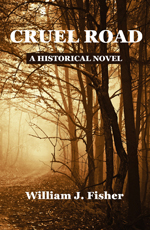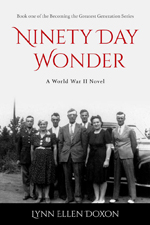William J. Fisher retired from one career as an Air Force officer and another as an economic and land development planner, and now enjoys a third career as an author. His newest release, the historical crime novel The Price of the Sky: A Tale of Bandits, Bootleggers, and Barnstormers (April 2023), is based on the true story of “a young aviator turned reluctant bootlegger and bank robber who spends his life seeking redemption, clemency, and romance.” You’ll find Bill on his Amazon author page. Read more about his writing in his 2021 interview for SouthWest Writers.
 The Price of the Sky is based on real people and events. What was it about Foster Bedford Jones that intrigued you enough to write a novel based on his life?
The Price of the Sky is based on real people and events. What was it about Foster Bedford Jones that intrigued you enough to write a novel based on his life?
My wife Vicki and I knew Bedford Jones in the 70s and 80s until he died in 1990. He was especially a friend of Vicki’s family. Few knew the story of his early life in our small hometown until we had access to his personal papers after he died. We discovered some interesting items in these papers about his past. Years later, I did research on Bedford and found numerous newspaper articles about him, his brothers, and his criminal gang in Texas. I thought his story would make a good crime novel.
What is your main character’s greatest flaw and his most endearing quality?
Bedford’s flaws were that he drank and gambled too much. But his biggest flaw was that he hung out with criminals and bad influences. His most endearing qualities were his skills as a pilot, his love of flying, and his determination.
How did the book come together?
I had some of the source material for many years. When I finished my first book Cruel Road, I started the heavy research on The Price of the Sky, which took about six months. The actual writing took about a year. I had two outside editors: a developmental editor and a copy editor. Editing took about four months. Vicki was my proofreader. I designed the cover.
What were the most challenging aspects of completing this book?
I find that editing and rewriting are the most challenging. Also, since this is mostly a true story, I had to balance the facts with the fiction and drama to make it interesting to the reader.
Any “Oh, wow!” moments while doing research for The Price of the Sky?
There were plenty of “Oh, wow!” moments. When I discovered that Bedford had robbed banks, had belonged to a gang of about twenty robbers, bootleggers, and murderers, and had two brothers that had been in prison for murder and robberies, I thought that nobody in my hometown really knew this man. The other moment was when I discovered he had five wives, and his second wife was a prominent woman with political connections in Indiana who helped him get a pardon from the Governor of Indiana.
 What is it about historical fiction that draws you to it as an author?
What is it about historical fiction that draws you to it as an author?
I got into historical fiction by chance. I wanted to write and had historical material for sources of drama, mystery, action, romance, and adventure. I then used my intuition and imagination to write a good story. Cruel Road is based on the true story of my 6th great grandparents in colonial Pennsylvania. The Price of the Sky is the true story of someone I knew in my hometown in Indiana. Both books are personal.
What writing projects are you working on now?
I have two projects in the early conceptual phases. One is a contemporary novel set in modern Indian Country. I spent nearly 12 years working for two New Mexico Pueblo tribes as a planner and business development specialist. I was exposed to areas of the tribe that many non-Indians know little about. I want to write about native culture and issues on the reservations. There are so many stories in tribes often unknown to the public.
The future book may be science fiction. I have often thought about writing science fiction but have just started to think about plots, settings, characters, etc. I am looking for something unique.
 KL Wagoner (writing as Cate Macabe) is the author of This New Mountain: a memoir of AJ Jackson, private investigator, repossessor, and grandmother. Kat has a speculative fiction blog at klwagoner.com and writes about memoir at ThisNewMountain.com.
KL Wagoner (writing as Cate Macabe) is the author of This New Mountain: a memoir of AJ Jackson, private investigator, repossessor, and grandmother. Kat has a speculative fiction blog at klwagoner.com and writes about memoir at ThisNewMountain.com.


 Su Lierz writes dark fiction, short story fiction, and personal essays. Her short story “Twelve Days in April,” written under the pen name Laney Payne, appeared in the 2018 SouthWest Writers Sage Anthology. Su was a finalist in the 2017 and 2018 Albuquerque Museum Authors Festival Writing Contest. She lives in Corrales, New Mexico, with her husband Dennis.
Su Lierz writes dark fiction, short story fiction, and personal essays. Her short story “Twelve Days in April,” written under the pen name Laney Payne, appeared in the 2018 SouthWest Writers Sage Anthology. Su was a finalist in the 2017 and 2018 Albuquerque Museum Authors Festival Writing Contest. She lives in Corrales, New Mexico, with her husband Dennis.